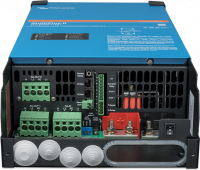caymaanedge
New Member
- Joined
- Jul 19, 2020
- Messages
- 129
Ok, so getting my new Multiplus ii 2x120 installed in my RV.
The terminal block for the AC in and AC out is a push-in type connector. I am having a bear of a time getting my high strand wires to seat properly. Anyone fight with this issue? I am concerned some of the strands will not make it into the terminal or that it will overheat. TIA
The terminal block for the AC in and AC out is a push-in type connector. I am having a bear of a time getting my high strand wires to seat properly. Anyone fight with this issue? I am concerned some of the strands will not make it into the terminal or that it will overheat. TIA



